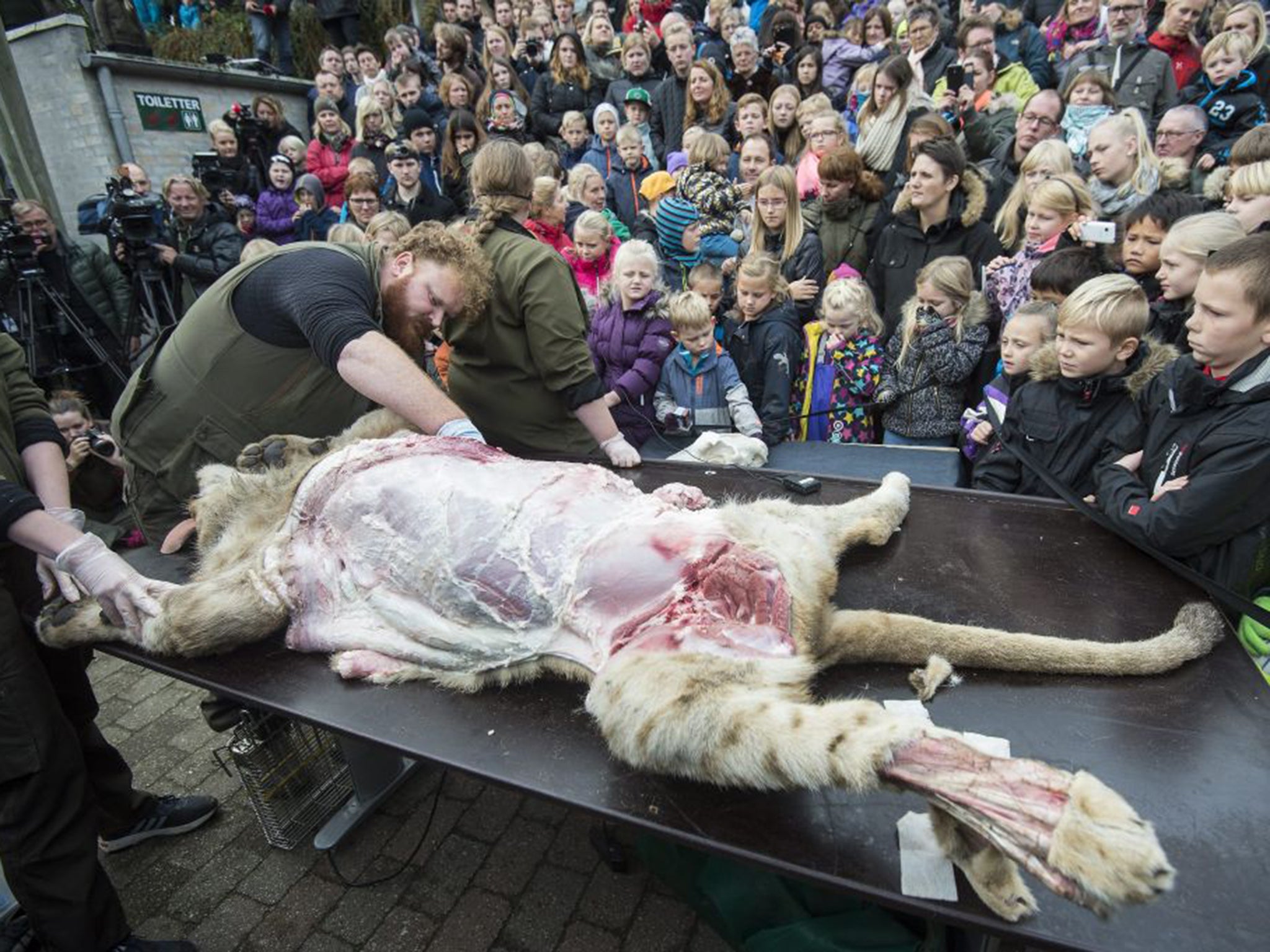Dead lion dissected in front of children at Danish zoo
Odense Zoo killed the lion nine months ago after the pride became too big and 'numerous attempts' to find an alternative home elsewhere proved unsuccessful

Your support helps us to tell the story
From reproductive rights to climate change to Big Tech, The Independent is on the ground when the story is developing. Whether it's investigating the financials of Elon Musk's pro-Trump PAC or producing our latest documentary, 'The A Word', which shines a light on the American women fighting for reproductive rights, we know how important it is to parse out the facts from the messaging.
At such a critical moment in US history, we need reporters on the ground. Your donation allows us to keep sending journalists to speak to both sides of the story.
The Independent is trusted by Americans across the entire political spectrum. And unlike many other quality news outlets, we choose not to lock Americans out of our reporting and analysis with paywalls. We believe quality journalism should be available to everyone, paid for by those who can afford it.
Your support makes all the difference.A dead lion has been dissected in front of an audience of children at a zoo in Denmark.
Odense Zoo, which also streamed the dissection live online, killed the lion nine months ago after the pride became too big and “numerous attempts” to find an alternative home elsewhere proved unsuccessful, according to a statement by the European Association of Zoos and Aquaria (EAZA).
However Joanna Swabe, head of the Brussels-based Humane Society International, said that “zoos routinely over-breed and kill lions and thousands of other animals deemed surplus to requirements”.
She argued zoos had “an ethical responsibility… to manage reproduction, prevent inbreeding (and) maintain genetically healthy populations” by using contraceptives.
In February last year, there was uproar when Copenhagen Zoo decided to kill Marius the giraffe because it had not been able to find an alternative home. Its remains were then fed to the zoo’s lions.
During the lion’s dissection, which was deliberately held during local school holidays, the head was cut off and the animal’s intestines, heart and liver were removed.
“For all the kids living in towns, it's wonderful for them to see and it's only natural,” Gitte Johanson, 28, a visitor who grew up on a farm, told the Associated Press.
Ole Hanson, a 54-year-old military officer, was carrying his five-year-old grandson Frej on his shoulders so he could watch the dissection as it started.
“But he wanted to get down and have a closer look. So he ended up front, right before the lion,” Mr Hanson said.
In a statement issued before the dissection on Thursday, EAZA said: “The animal was culled after numerous attempts to find another institution of similar high welfare standards to take it were unsuccessful.
“It is EAZA's position that culling of animals is one of a range of scientifically valid solutions to the long-term genetic and demographic sustainability of animal populations in human care. This management tool is given equal consideration in the effective management of populations, along with others such as contraception and translocation.
“The welfare of an animal that has been humanely culled cannot be compromised by the decision to dissect its carcass.”
It said that dissecting an animal carcass for educational purposes was “a valid choice of the zoo”.
“It should be noted that public understanding of a species, including the challenges it faces in the wild and the nature of its anatomy can be well served by such demonstrations,” EAZA said.
However it said it recognized that the dissection “may not be as widely accepted in some cultures as in others”.
The Associated Press contributed to this report
Join our commenting forum
Join thought-provoking conversations, follow other Independent readers and see their replies
Comments